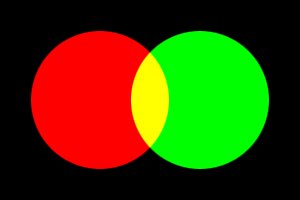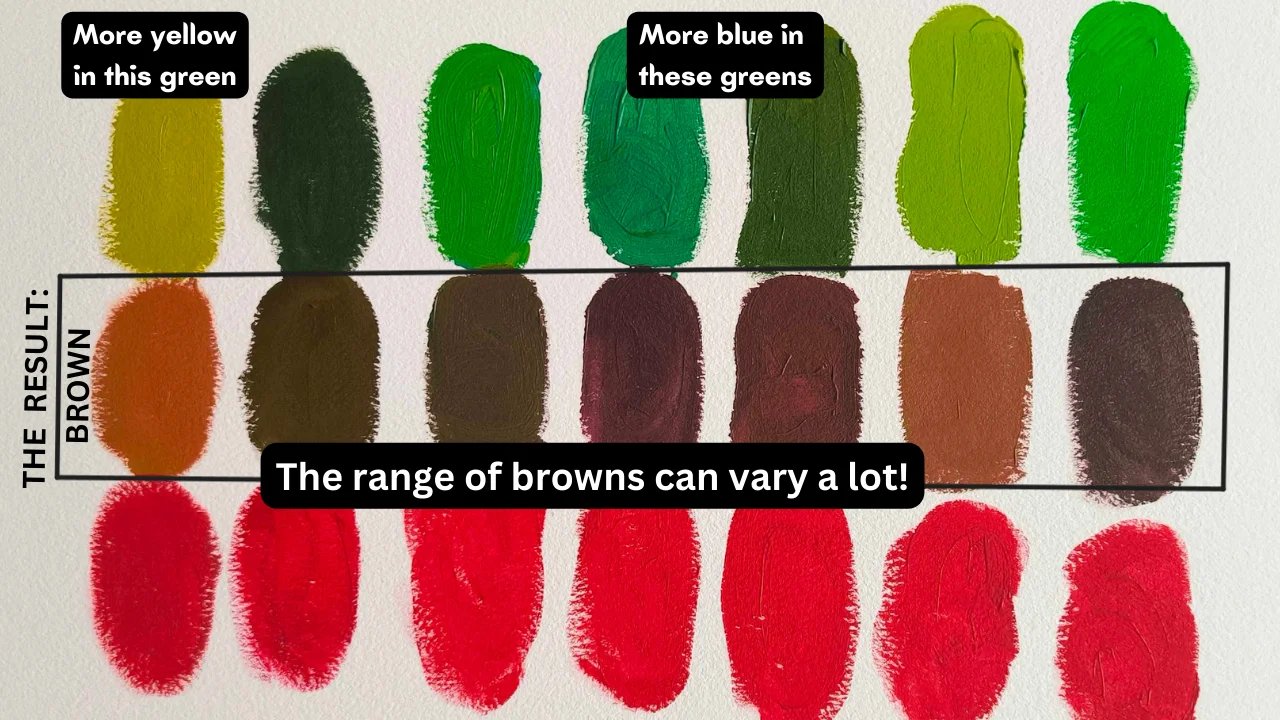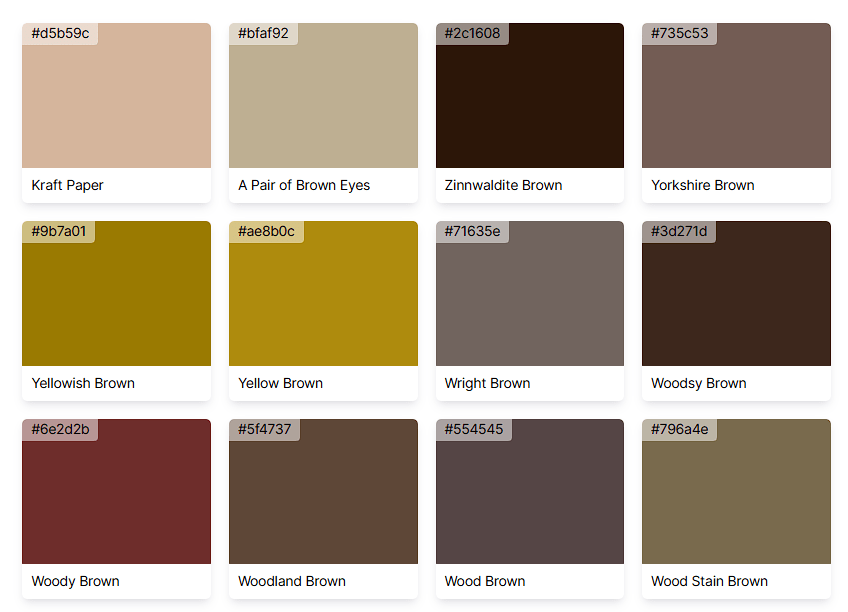Red and green are bright, bold colors, but what happens when they meet?
It really depends on how you mix them.
In the world of light (think TVs or monitors), combining red and green light gives you yellow.
But in the world of pigments and paints, blending red and green often turns out brownish or grayish, not yellow.
I’ve seen plenty of confused students and digital designers face this exact question, so let me explain how both results make sense.
What Red and Green Color Makes in Additive Color Mixing (Mixing Light)
When you mix colors of light, like on a screen or with stage spotlights, it’s called additive mixing.
The primary light colors are red, green, and blue.
The handy thing is they add up to other colors: for example, red light + green light = yellow light.

For example: two projectors, one casting red and the other green. Where their beams overlap, your eyes see yellow. This happens because our eyes have sensors for red and green, and when both are triggered, the brain perceives yellow.
This isn’t just theory—everyday digital design relies on it.
On computer screens, all color is made by mixing red, green, and blue pixels. So, if you set red and green channels to full brightness and blue to zero, the result is pure yellow.
In short, red and green color makes yellow in additive color mixing. It’s counterintuitive if you’re used to painting, but in light, it really does.
Mixing Red and Green Paint or Ink (Subtractive Color)
Now let’s switch gears to subtractive mixing. That’s what happens with dyes, paints, or colored pencils.
Here the “primaries” are really cyan, magenta, and yellow (in printing) or the traditional red, yellow, blue in painting.
If you throw red and green pigment together, you usually get a muddy brown.
Try mixing a tube of red paint with a tube of green paint on your palette. The bright green (which itself often has yellow and blue in it) will cancel out some of the red, leaving a dull brown or olive color.

Why brown? In subtractive mixing, each pigment absorbs (subtracts) some wavelengths of light. Red paint absorbs all but red wavelengths; green paint absorbs all but green and blue wavelengths.
When you mix them, almost all wavelengths get absorbed except some combination of green+red reflections. What’s left is a dark, muted tone.
The exact brown can vary. Sometimes leaning earthy brown, sometimes khaki or even gray if the tones are just right.
But it never makes bright yellow like light does.
Why the Difference?
It might help to imagine two examples side by side. One image shows separate red and green paints (see the swatches above) that look vibrant on their own. But when you mash a brush into both and stir them on a palette, you end up with a muddy dark color.
This isn’t a magic rule; it’s physics and biology. With light, additive mixing combines wavelengths. With paint, subtractive mixing overlaps pigments that soak up different wavelengths.
Variety of Brown Shades

The “brown” you get by mixing red and green isn’t always the same shade. It can be warm reddish-brown color, or cooler olive-brown color, depending on the exact pigments.
A touch of a yellowish green yields a different result than a bluer green.
Mixing red and green paints produces “a range of colors from various hues of brown, khaki, and burgundy”.
If you add more green pigment, the brown might drift olive or beige; if your red has orange or blue tones, the mix could veer towards chocolate brown or gray.
In practice, designers and artists often use a little green paint to darken reds or vice versa, knowing the outcome will be an earthy color.
Tips for Creatives
So what should you remember when working with red and green?
First, context matters. If you’re coding a website or designing with LEDs, remember that red+green light = yellow.
You might use that for a golden glow or warning sign.
But, if you’re mixing inks for print or paints on canvas, don’t expect magic yellow, expect brown.
On the other hand, use this knowledge to your advantage. If you need a natural brown, you can mix equal parts red and green paint (and maybe tweak with yellow or black for depth).
Or if you want to mute a red (tone it down), add a greenish hue.
- Additive (Light): Red + Green = Yellow. This is what happens on screens and with colored lights.
- Subtractive (Paint): Red + Green = Brown/Gray. Think muddy earth colors, not bright yellow.
- Varying Hues: The exact shade shifts: you might get anything from warm brown to olive or khaki, depending on your pigments and ratios.
With this in mind, you’ll never be caught off-guard by a “red+green” question.
Leave a Reply